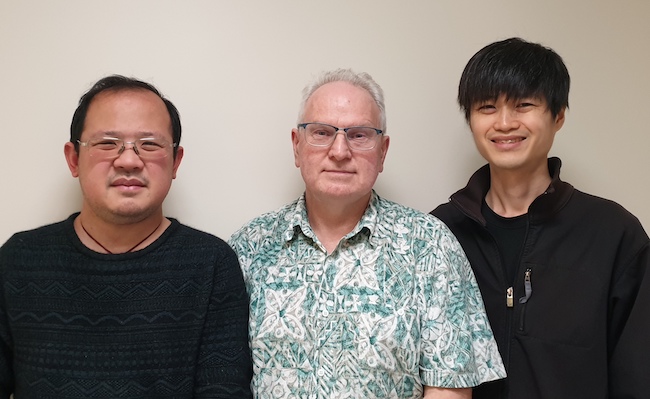
The Health Research Council have just funded a team of Otago Biochemistry researchers to develop a promising new way to treat drug-resistant 'superbugs'.
Thanks to the ways we use (and abuse) antibiotics, we have a growing problem with infectious bacteria that have evolved to be resistant to drugs. As a result, we now have an urgent need for new treatments for bacterial infections. The Otago Biochemistry team is tackling this problem by using weapons from the enemies of bacteria in the 'wild': naturally-occurring viruses that attack and kill bacteria, known as 'bacterial eaters' or bacteriophages.
Phage viruses use specific protein molecules to attack their target bacteria. If we can figure out which proteins they use, we could then use those proteins as new ways to treat bacterial infections. There are huge amounts of phage genome sequence data available that contain the blueprints to make these proteins, but it is difficult to work out which parts are important. Additionally, there are hundreds of different proteins to sort through from each phage, and millions of different types of phage to look at.
Associate Professor Chris Brown, of the Biochemistry Department, along with co-investigators Dr Te-yuan Chyou and Dr Chun Shen Lim, have just been awarded a $150,000 Explorer Grant from the Health Research Council to develop computational methods to find out which phage molecules could be put to use as new antibiotics. They plan to combine statistical and AI methods to sift through the vast amounts of phage genomic data.
Dr Brown sees great potential in this research. “In preliminary studies we have identified thousands of potential anti-bacterials. To select the best ones we propose to develop novel computer methods to predict their hosts, biophysical, functional, and expression properties,” he says.
“If successful, this research will provide proof of principle by discovering and testing pre-clinically new antibacterials. It will open up a novel and flexible computational approach to transform antibiotic discovery.”
Photo at top, from left: Dr Te-yuan Chyou, Associate Professor Chris Brown, and Dr Chun Shen Lim. Model of bacteriophage T4 by Dr Victor Padilla-Sanchez, CC BY-SA 4.0 https://commons.wikimedia.org/w/index.php?curid=92020519
Model of bacteriophage T4 by Dr Victor Padilla-Sanchez, CC BY-SA 4.0 https://commons.wikimedia.org/w/index.php?curid=92020519